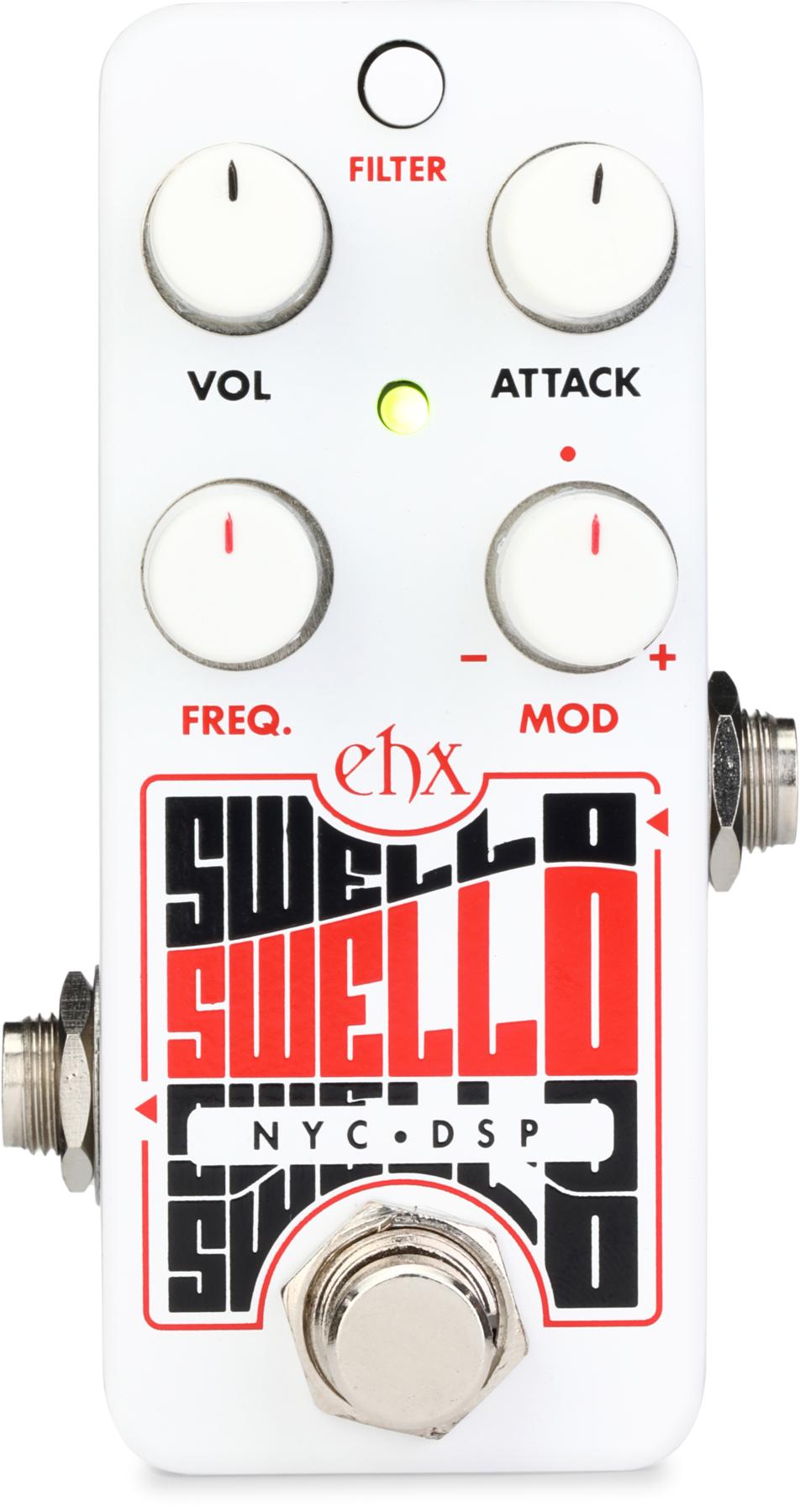I enjoy clarity and chime, so I really like the open-top-end sound of a bright cap across the volume pot. Some folks do not and remove them, finding mellow mojo. What follows is an explanation of what bright caps are and how they work, plus general treble tips to consider on our journey from kilocycles to kilohertz.
When a guitar signal travels through an amp and encounters a large resistance, the high frequencies tend to sound more attenuated or shelved compared to the lower frequencies. Bright caps exist to restore this perceived loss of openness and treble. The features on most analog amps work by subtraction—throwing signal away (series resistance) to create an aural effect. Passive tone controls, reverb circuits, and volume controls are prime examples. Almost every classic guitar amp has a bright cap on the volume control. A volume potentiometer will typically be a 1-megaohm resistor with a variable tap/wiper. The top of the pot (the resistor) is connected to the signal source and the bottom is connected to ground (zero signal). The wiper sweeps between the two ends and is our variable output level—controlling the volume range, from silent to loud.
Vive la résistance! Let’s consider a loud-ish at-home playing level, with the volume set to 3. I’m visualizing a classic blackface Fender volume knob here. How does this setting translate into series resistance? It’s around 850,000 ohms! That’s 850k ohms in series to the wiper (output) and 150k ohms to ground: 1-megaohm total (Image 1). The snappy guitar signal enters the 850k resistance but sounds dull and flat once it passes through. How do we fix that? That’s where a bright cap comes in. A small-value capacitor—usually in the 47-to-250 pico farad (pF) range—is connected from the pot’s maximum signal point to the wiper output. Now the highs jump over the 850k resistance through the bright cap to the wiper and out to the next stage, creating sonic balance. In this example, a typical blackface signal passing through a 100 pF bright cap allows highs in the 2,000 Hz range and more to pass the resistor more easily. So, our guitar’s “air” and glassy leading edge is restored!
If you want more of a good thing, increase the bright cap’s value and the fast-lane frequency drops lower, allowing more and more upper-mid bite along with the shimmer. Or reduce the bright cap value for a rounder, softer sound. Often just a little is enough for clean tones. High-gain and classic British amps have big bright cap values of 500 pF up to 5000 pF (or .005 µF). Large bright caps like that over a 1-megaohm pot really push upper mids and give you searing overdrive. Such big cap values are generally not good for clean tones and can sound “honky” when you turn the volume down.
Many favored amps have bright caps. Fender Twins and Super Reverbs have a 10 pF bright cap over a 3.3-megaohm series signal resistor. In many Marshall amps there is a 500 pF bright cap over the 470k resistor leading to the second gain stage.
So how can we use this info? If you have an amp you feel is too edgy or bright for your taste, you can remove or change the value on one of these caps and see if you like the sound better. Volume pot bright caps are easy to experiment with. Try smaller values than stock for a more subtle lift in the top or go larger for more aggressive tones. You can also add a series resistor in line with your bright cap. This will pad down the bright cap’s effect and soften the leading edge. Note: If you don’t know how to discharge caps, then a tech is the way to go for safety’s sake. Bright cap mods are straightforward, so they should be affordable.
More treble tips. But before trying any internal mods, experiment with room position and treatment. You probably know this, but it’s worth repeating: single-coil pickups are brighter than humbuckers, bridge position pickups are brighter than neck position, pickups raised closer to the strings are brighter, rooms with exposed hard surfaces (glass, uncovered hardwood floors, sheet rock, or brick walls) are brighter than rooms with rugs and soft furnishings. Amps sitting on the floor positioned near walls or corners sound fuller and darker compared to amps away from walls, and amps on raised platforms (stands or chairs) or tilted up are brighter. If your amp sounds too bright, try placing a small rug under and in front of it while keeping the amp close to a wall. This can do a surprising amount of tone shaping, and it’s easier than digging into the circuitry. In a live band setting, put your amp up on a chair and think of it as your personal monitor. Lifting it off the ground will help your sound cut through and stay tight, plus it puts the speaker closer to your ear level. One more thing: Mid controls contain a lot of treble, too, so experiment with lowering mids to reduce treble.












![Rig Rundown: Russian Circles’ Mike Sullivan [2025]](https://www.premierguitar.com/media-library/youtube.jpg?id=62303631&width=1245&height=700&quality=70&coordinates=0%2C0%2C0%2C0)









